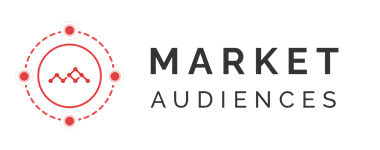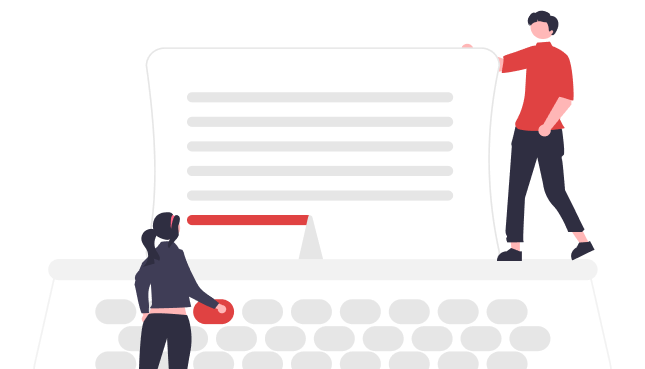Every visitor arrives at a different stage of their decision journey, as we would describe the buyer’s journey.
Understanding these stages—and creating content that matches where people are in their thinking, the decisions they are making —is what transforms casual browsers into engaged prospects.
The buyer journey isn’t linear. It’s more like a bingo card where prospects fill in different squares as they explore their options, comparing solutions and building confidence in their eventual decision.
Why Journey Stage Matters More Than Keywords
Traditional websites optimise for keywords without considering visitor intent. But someone searching “marketing automation” could be:
- Exploring the concepts (early stage – needs education)
- Comparing approaches (middle stage – needs methodology)
- Evaluating providers (late stage – needs specifics)
Each stage requires completely different content to convert effectively.
The Universal Journey Stages
While every market has its own specific considerations, the fundamental decision process follows predictable patterns:
1. Informational
“Why is this important? Why should I care?”
Visitors are exploring concepts but need compelling reasons to invest their attention. They need content that establishes importance and relevance before diving into details.
- Content Type: Importance articles, trend analysis, consequence explanations, “why this matters” content
- Conversion Goal: Subscribe for more information, download guides
2. Problem/Opportunity (Motivation)
“Do I have enough pain or potential gain to justify change?”
This is the emotional energy stage where visitors need motivation to move from the status quo. Content must create contrast between current pain points and future possibilities, building the emotional case for action.
- Content Type: Before/after scenarios, cost of inaction analysis, opportunity stories, vision content, transformation examples
- Conversion Goal: Problem assessment tools, deeper engagement
3. Solution
“What approaches are available?”
Visitors are exploring different ways to address their situation. They need content that maps the landscape of possible solutions and methodologies
- Content Type: Solution comparisons, approach overviews, methodology explanations
- Conversion Goal: Solution-specific downloads, webinar attendance
4. Process
“How would this actually work?”
Visitors need to understand implementation processes and what’s involved. They want confidence that execution is feasible for their situation
- Content Type: Process explanations, timeline guidance, step-by-step methodologies
- Conversion Goal: Process consultations, detailed assessments
5. Service
“What type of service do I need?”
Visitors are evaluating different service models and levels of engagement that might fit their requirements and constraints.
- Content Type: Service comparisons, engagement models, investment levels
- Conversion Goal: Service consultations, proposal requests
6. Product
“What specific offering meets my needs?”
Visitors are comparing specific products, packages, or implementations to find the best fit for their situation.
- Content Type: Product specifications, feature comparisons, case studies
- Conversion Goal: Product demonstrations, detailed proposals
7. Provider
“Who should I work with?”
The final stage focuses on provider selection, comparing credibility, methodology, team, and cultural fit.
- Content Type: Team credentials, case studies, client testimonials, methodology explanations
- Conversion Goal: Sales conversations, final proposals
Journey Words in Search Language
Buyer journey stages reveal themselves through the language people use:
We ‘interpret’ the intent and the stage of the journey by figuring out which decision they are making.
Early Stage Journey
- What is, meaning, definition
- Why it matters, survey, statistics
Middle Stage Journey
- vs sales funnel, framework, vs buyer persona
- guide, process, example, stages
Late Stage Journey
- mapping content, buyer journey map
- course, training, consultant
The later the journey stage, the more likely clicks are to convert. All clicks matter, and early-stage clicks won’t convert unless later-stage content is also present.
Find the content gaps, and make buyer journey maps.
Content Strategy by Journey Stage
Selling Ideas (Early Stage)
Thought leadership content that reframes how visitors think about their situation. Focus on building new beliefs and challenging assumptions
Selling Solutions (Middle Stage)
Methodology and comparison content that helps visitors understand different approaches and make informed decisions about direction.
Selling Products (Late Stage)
Specific service and implementation content that builds confidence in your particular solution and approach.
The Compound Effect
When you align content with journey stages, conversion rates compound over time. Visitors who find relevant content at their current stage are more likely to:
- Stay engaged longer
- Return for additional research
- Progress naturally to the next stage
- Convert at higher rates when ready
Hub-Level Implementation
Rather than isolated pages targeting individual journey words, organise content into journey-aware topic hubs:
Topic Hub Structure:
- Hub overview page (serves all stages)
- Journey-specific sub-pages
- Natural progression paths between stages
- Cross-links to related topics
This creates a comprehensive experience that serves visitors wherever they enter and guides them through their natural decision progression.
Framework Commentary: Notice how this hub page demonstrates buyer journey principles in action. The content progresses from concept explanation (selling ideas) through methodology description (selling solutions) to implementation guidance (selling products). Each section serves visitors at different stages while maintaining coherent flow for those reading sequentially. The journey word examples help visitors recognize their own search patterns, creating immediate relevance and engagement.
Content Architecture Note: This hub would connect to detailed sub-pages for each journey stage, plus cross links to Market Words and Audience Words hubs. Internal linking would emphasize natural progression paths while allowing non-linear exploration based on visitor interest and current stage


